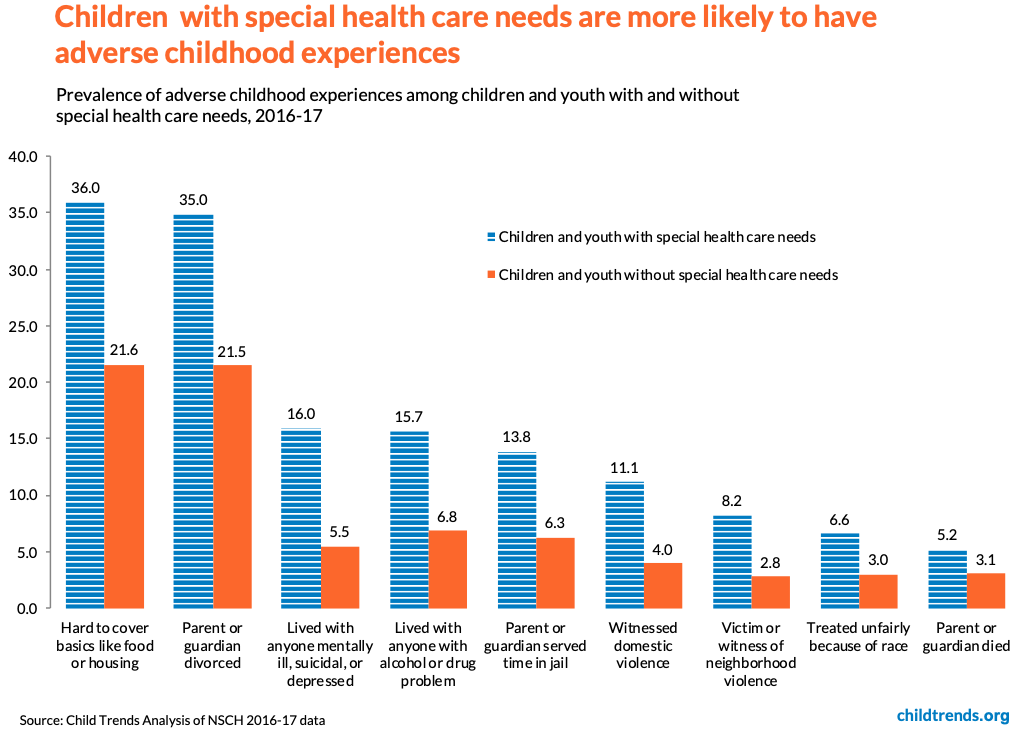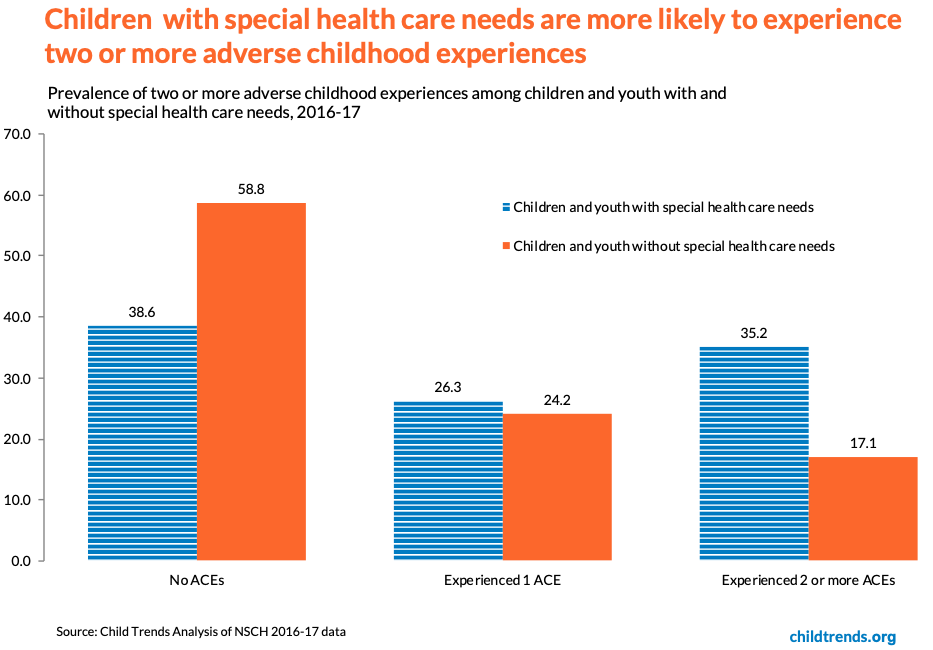Adverse experiences more likely for special health needs children

The prevalence of adverse childhood experiences (ACEs) is higher among children and youth with special health care needs, researchers from Child Trends’ have found.
The term ‘special health care needs’ refers to any physical, developmental, mental, sensory, behavioural, cognitive or emotional impairment that requires medical management, health care intervention, and/or the use of specialised services or programs.
ACEs are potentially traumatic events that occur in a child or young person’s life, up until the age of 17 years. Some examples of ACEs include:
- experiencing violence or abuse
- witnessing violence in the home or community
- having a family member attempt or die by suicide
ACEs also include aspects of the child’s environment that can undermine their sense of safety, stability, and bonding such as growing up in a household with:
- substance misuse
- mental health problems
- instability due to parental separation or household members being in jail or prison
Researchers have found that ACEs are linked with chronic health problems, mental illness, and substance abuse in adulthood. ACEs can also negatively impact on education and job opportunities later in life.
Data from the 2016-17 National Survey of Children’s Health (NSCH) was used to compare children with special health care to their peers without special health care needs, with some of the key findings summarised in the graph below:

Children and young people with special health care needs are twice as likely to have had an incarcerated parent, witnessed domestic violence, been a victim of or witnessed violence in the neighborhood, lived with an adult with substance abuse or mental illness, or experienced racism than their peers with no such needs.
The presence of one or more ACEs in conjunction with special health care needs can lead to toxic stress, which increases risk to an individual’s physical, social, and emotional health and well-being.
Addressing the causes and consequences of the adversities that affect the well-being of children and youth with special health care needs is essential to creating more equitable outcomes for them, researchers said.
In addition to the findings above, researchers also found that children with special health care needs are more likely to experience two or more ACEs (35 per cent) compared with 17 per cent of children and youth without special health care needs, as shown in the graph below:

With the experiences included in the survey representing only a small subset of childhood adversities, researchers said their findings presented a “conservative estimate” of the cumulative exposure to ACEs faced by children with special health care needs.
Exposure to ACEs and other forms of childhood adversity does not always result in trauma or toxic stress; supportive, positive relationships with one or more adults, as well as positive coping strategies, may mitigate some negative effects, researchers said. However, prolonged or frequent exposure to adversity without adequate support may lead to toxic stress that can negatively affect brain development and health.
To progress their findings, and see them implemented in a societal context, researchers recommended that children with special health care needs receive greater attention from health and education providers, and from other social services working to incorporate trauma-informed care into practices, procedures, and programs.
“Such institutions should work to ensure that trauma-informed approaches are integrated into places and environments where these children (and their caregivers) receive services,” they added.
To read the research in full, please see the Child Trends website, here.
Popular

Practice
Provider
Quality
Research
Workforce
New activity booklet supports everyday conversations to keep children safe
2025-07-10 09:00:16
by Fiona Alston

Quality
Practice
Provider
Workforce
Reclaiming Joy: Why connection, curiosity and care still matter in early childhood education
2025-07-09 10:00:07
by Fiona Alston

Quality
Practice
Provider
Research
Workforce
Honouring the quiet magic of early childhood
2025-07-11 09:15:00
by Fiona Alston












